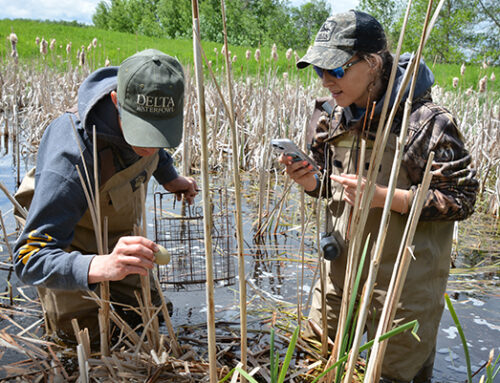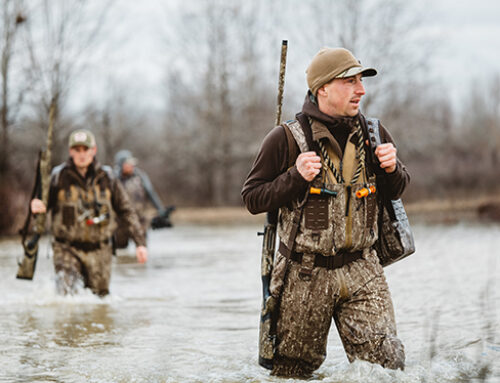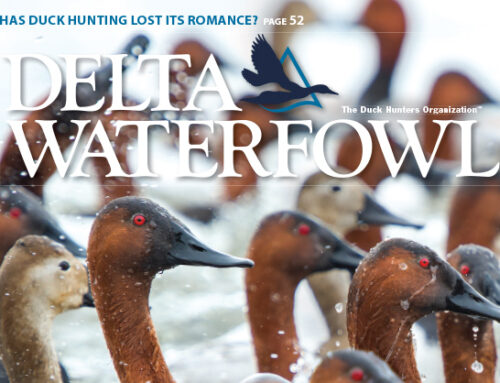Ducks Decline in Eastern
Survey Area
Survey Area

The Waterfowl Population Status Report’s eastern survey area is a key fall-flight indicator for Atlantic Flyway waterfowlers. Conducted jointly by the U.S. Fish and Wildlife Service and Canadian Wildlife Service since 1990, the eastern survey provides estimates for the six most abundant breeding ducks across the eastern United States and Canada.
 A key change occurred this year: The population estimates now include birds counted in eastern U.S. states from Virginia to New Hampshire, along with population estimates in eastern Canada and the northern United States. Therefore, each population estimate now covers a larger area, so the numbers are higher than those published in prior years.
A key change occurred this year: The population estimates now include birds counted in eastern U.S. states from Virginia to New Hampshire, along with population estimates in eastern Canada and the northern United States. Therefore, each population estimate now covers a larger area, so the numbers are higher than those published in prior years.
In 2018, the only index species to increase in the East was ring-necked ducks, which climbed 2 percent to 629,000, 10 percent below the long-term average.
“Breeding conditions in the eastern survey area were excellent in 2017, but merely average this year,” said Dr. Frank Rohwer, president and chief scientist of Delta Waterfowl. “So it’s not surprising that most breeding-duck estimates are down.”
Mallards declined 4 percent to 1.06 million, 15 percent below the long-term average. That’s not the news waterfowlers want to hear, given the intent of the USFWS and Atlantic Flyway Council to cut Atlantic U.S. mallard limits to two birds daily for the 2019-2020 season. (Delta Waterfowl opposes the severity of the proposal.)
“However, it’s important to note that mallards breeding in the northeastern United States — the downward-trending population that inspired talk of reduced bag limits — actually increased this year,” Rohwer said. “It was eastern Canada’s mallards that declined from 2017, despite trending slowly upward since 1990.”
Mallards breeding in the northeastern U.S. (New Hampshire to Virginia) increased 7 percent to 482,100, but remain 32 percent below the long-term average.
“It’s unlikely this modest increase is enough to change the Service’s mind about lowering bag limits,” Rohwer said. “But it sure beats the alternative.”
Black ducks declined for the second straight year, dipping 9 percent to 712,000 birds, 20 percent below the long-term average. The green-winged teal index of 346,000 birds is a 1 percent decline and 9 percent below the long-term average. Goldeneyes declined 13 percent to 486,000 ducks, 17 percent below the long-term average, while mergansers declined 4 percent to 656,000 birds, 8 percent above the long-term average.
A survey of wood ducks from New Hampshire south to Virginia estimated 394,400 birds, unchanged from 2017, and slightly above the long-term average.
According to USFWS pilot-biologists, dry conditions in portions of the East and extreme weather events in the maritime provinces — including poorly timed flooding that destroyed early nests and a late winter thaw that delayed breeding efforts — affected breeding conditions and challenged survey crews.
Ducks were especially behind schedule in northern Quebec and Labrador, where thawed wetlands became available much later than normal. Further, the entire eastern survey area had well-below-average temperatures in April, that in some cases, continued into May. Overall breeding conditions were reported as “fair to good,” and “declined or remained similar to 2017.”
“Typically the eastern survey area provides fairly stable conditions for breeding ducks compared to the drought-prone traditional survey area,” Rohwer said. “But as we’re seeing this year, no matter the region, duck survey numbers are strongly linked to habitat conditions.”






Leave A Comment